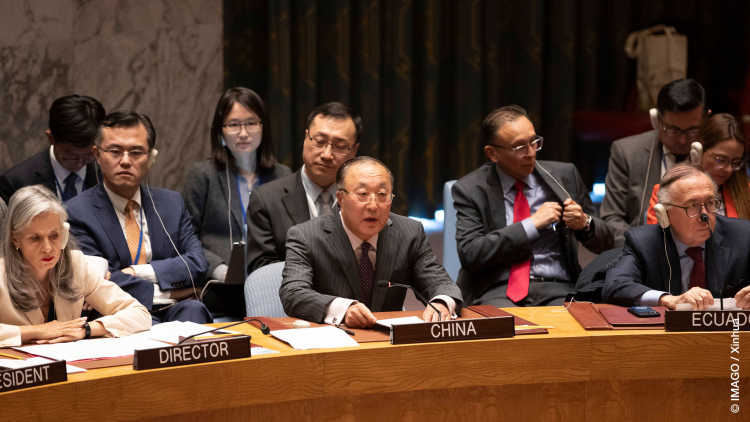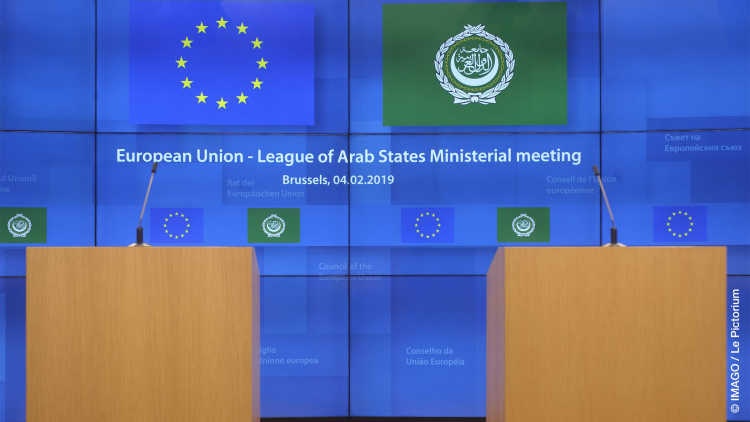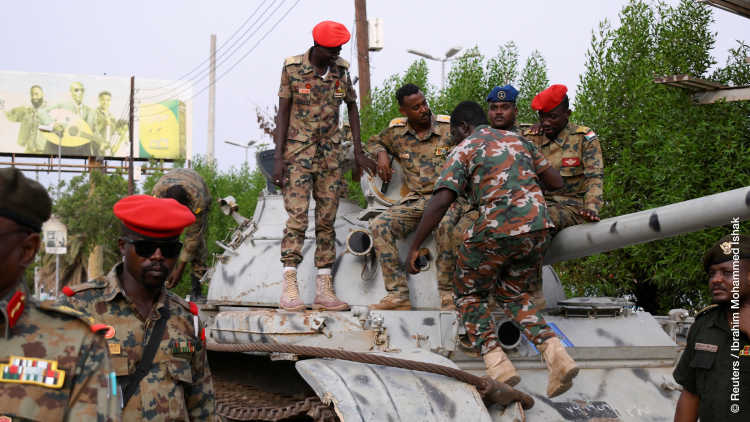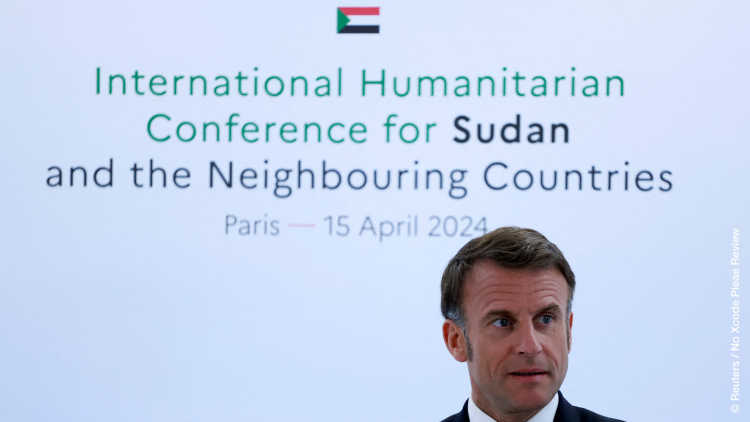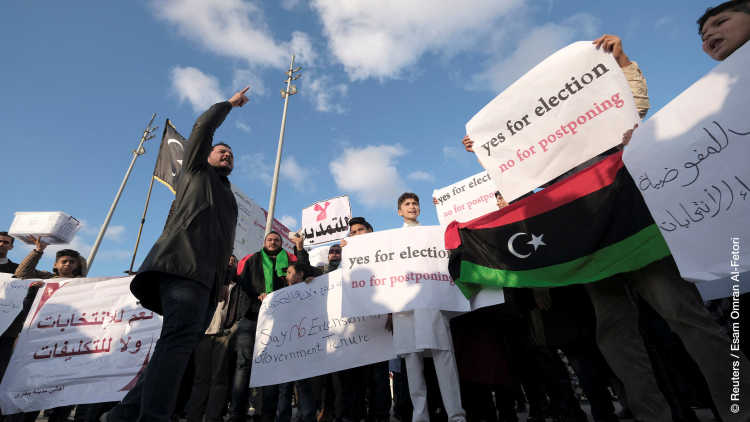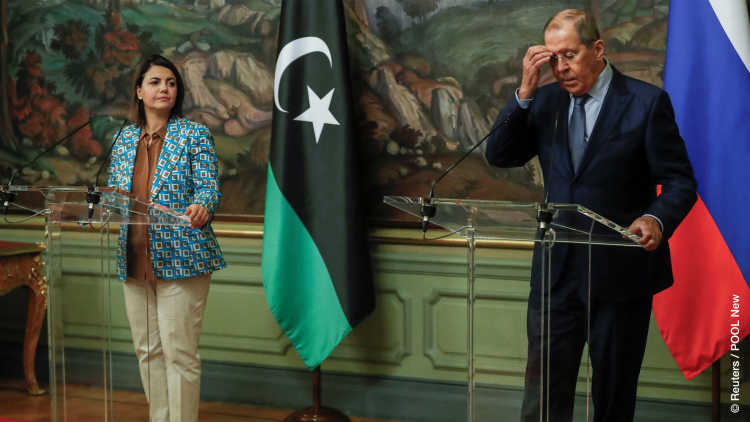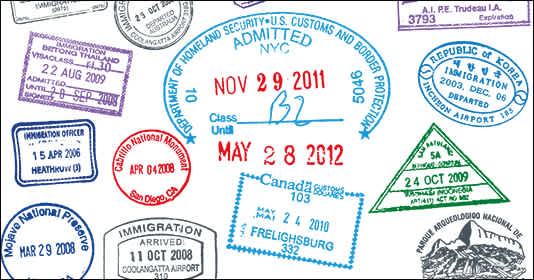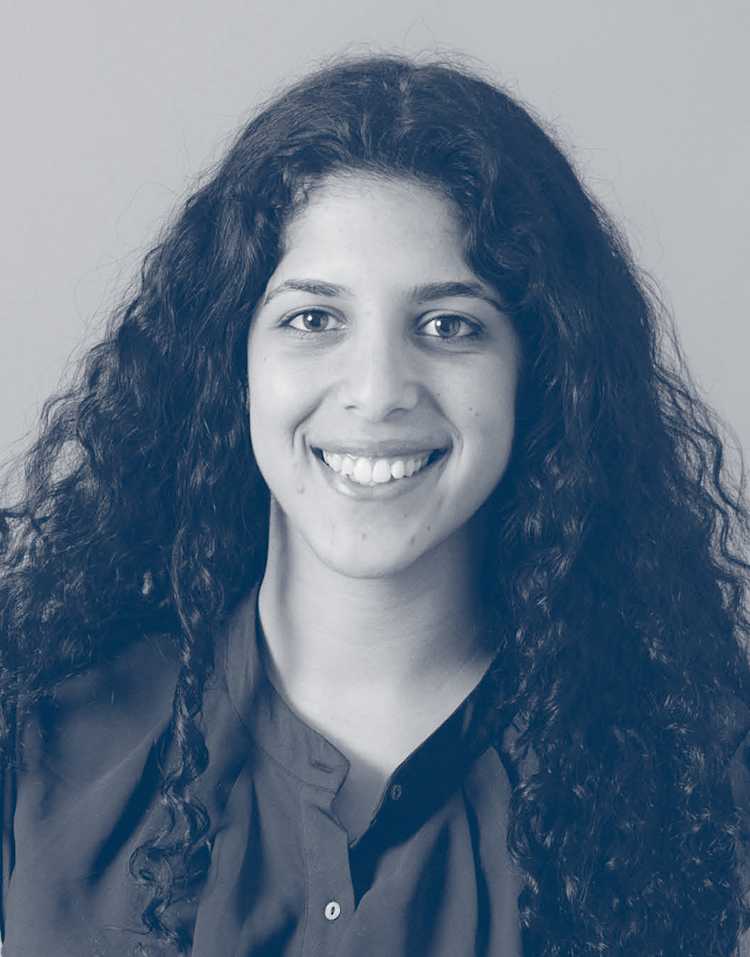- Home
- Publications
- GIGA Focus
- The War in Sudan: How Weapons and Networks Shattered a Power Struggle
GIGA Focus Middle East
The War in Sudan: How Weapons and Networks Shattered a Power Struggle
Number 2 | 2024 | ISSN: 1862-3611

Ten months into the war in Sudan, the paramilitary Rapid Support Forces (RSF) led by Mohammed Hamdan Dagalo dramatically overturned the battle against Abdelfattah Al-Burhan and the Sudan Armed Forces (SAF). Their capture of Sudan’s breadbasket in December 2023 is the culmination of new regional networks, changing weapons, and tactical sabotage – and it does not bode well for Sudan’s future.
In Khartoum’s urban battlefield, the SAF and RSF cannot concentrate their forces against the other, resulting in a stalemate. Outside Khartoum, the RSF chipped away at the SAF’s infrastructure and cut off its supply chains through sieges. The RSF have also dragged the fight closer to its networks outside Sudan, shortening their own supply routes. The RSF’s old and new equipment made them more adept at rural and desert warfare.
Sudan is surrounded by major arms-trafficking hubs, which the RSF uses to reinforce its supply lines against the SAF. Fuel, ammunition, weapons, and other cargo are smuggled through Libya, Chad, the Central African Republic, and via the Red Sea. Weapons also arrive from Uganda and South Sudan. The United Arab Emirates and the Wagner Group cooperate closely to supply the war through these countries.
The SAF and RSF may not be able to terminate the violence anymore because command structures within and between troops have eroded. The SAF’s losses provoke defections from its ranks. Factions that joined the war in Darfur and in Kordofan can supersede Al-Burhan’s and Dagalo’s authority on a municipal level and use the war for their group-specific goals.
Policy Implications
The European Union and its allies need to sanction the RSF’s auxiliary networks around the Wagner Group and the UAE to stifle the war. Sexual and genocidal violence against the people of Sudan need to be explicitly named and sanctioned. The African Union and the Intergovernmental Authority on Development should supplement peace negotiations with measures targeting arms trafficking in the region.
Sudan after 10 Months of War
On 15 April 2023, fighting broke out in Khartoum between the Sudan Armed Forces (SAF), led by Abdelfattah al-Burhan, and the paramilitary Rapid Support Forces (RSF), under Mohammed Hamdan Dagalo’s command. At the core of this power struggle was the integration of the RSF into the SAF, a security sector reform mandated in transitional agreements made since Al-Burhan staged a military coup in October 2021. Although both the SAF and RSF were formally under the command of Al-Burhan as Chairman of the Sovereignty Council and Supreme Commander of the SAF, the RSF stayed an autonomous paramilitary that was strongly intertwined with Dagalo and his family’s economic conglomerate.
Fighting in Khartoum’s urban combat setting proved challenging for both the SAF and the RSF, which trapped them in a drawn-out stalemate (Ali 2023b). While the SAF and Al-Burhan shifted their political base to Port Sudan in the east, the RSF took the fight to more familiar ground in Darfur and Kordofan respectively, where it quickly expanded its power. With the RSF’s chokehold on the west of Sudan, observers initially feared a Libya-type scenario wherein the country could split into east and west. From November 2023 onwards, however, the RSF advanced quickly towards the country’s east and captured Wad Madani in Al-Gezira State, Sudan’s breadbasket, on 18 December 2023. The fall of Wad Madani was a watershed moment for the RSF and another nail in the coffin for the dwindling prospects of peace in Sudan.
Ten months of war have had a devastating humanitarian impact on the people of Sudan. As of January 2024, the war displaced more than 10.7 million people, making this the world’s largest displacement crisis. The death toll is estimated at 12,000–15,000 people. The RSF and allied militia are targeting non-Arab ethnicities in Darfur, where more than 1,300 members of the Massalit minority have been killed to date. The systematic use of sexual violence against women and girls is rampant. Witnesses report that the RSF forcibly recruited children to fight. The war has also destroyed harvests in Al-Gezira which intensifies Sudan’s severe food insecurity.
From the stalemate in Khartoum to the fall of Wad Madani, the war’s trajectory raises questions about how the RSF have been able to gain the upper hand against the SAF, and what that means for pathways out of the war. An analysis of combat patterns, satellite images, weapon transfers, and trafficking routes for small arms shows that military logistics, weapons, and support networks have dramatically shifted in favour of the RSF. In particular, the RSF has sabotaged the SAF on a terrain where its supply networks are denser and geographically closer to battle sites than the SAF’s. Because the capture of Wad Madani cemented the prospect of a full RSF victory, the RSF no longer has any incentive to yield to the SAF – or share power with Sudanese civil society. As more pre-existing armed factions in Darfur and Kordofan hijacked the initial SAF–RSF power struggle as well, the principal conflict has increasingly localised. This has torn the scope of the war far beyond the parameters of ongoing peace negotiations, because the goal of ending SAF–RSF hostilities no longer reflects the conflict dynamics on the ground.
The SAF Stacked Up against the RSF
The dynamics of this war are highly unusual because the principal conflict parties, the SAF and the RSF, are two parts of one coercive apparatus wherein both forces had complimentary yet compartmentalised specialisation (Ali 2023b). The SAF is a conscripted military force made up of an army, navy, and air force, with around 200,000 active personnel (Ali and Kurtz 2023). The SAF was the political bulwark and backbone of the majority of Sudan’s regimes since independence and is highly enmeshed with the country’s economy. Over 200 companies were under the authority of Sudan’s Ministry of Defence in 2020. In the last decade, the SAF was supplied predominantly by Russia, Belarus, Ukraine, and China (SIPRI 2023). Chinese and Iranian infantry fighting vehicles and personnel carriers from 2000 on were often assembled in Sudan and used under a different designation. The Soviet Union and then Russia supplied the Sudanese Air Force with aircraft for combat and transportation. Sudanese weapons manufacturers often copy older Chinese or Russian and Iranian military equipment.
The state-run and -owned Military Industry Corporation additionally produced ammunition, conventional weapons, armoured vehicles, and other military items to be used domestically. Until it was destroyed in July 2023, the Yarmouk Military Factory in Khartoum was Sudan’s biggest military manufacturer and one of the most important on the African continent. It was partially owned by Iran and produced rockets, light to heavy artillery, light weapons, and ammunition.
A significant proportion of the SAF’s military equipment is, however, outdated (IISS 2023); most of the weaponry imported after1950 was second-hand on delivery. The arms embargo imposed by the United Nations Security Council in 2004, which was recently extended to September 2024, limited the import of weapons, parts for repairs, and upgrades to existing stocks. Sand, dust, and the desert heat add to the wear-and-tear on the SAF’s electronic and communications equipment, as well as on aircraft components.
The RSF, on the other hand, is a hyper-mobile guerilla force that was originally founded as the “Janjaweed” in Darfur and later co-opted into Omar Al-Bashir’s regime, who governed the country as president from 1993 to 2019. The RSF’s corps is estimated to be between 70,000–150,000 strong and, unlike the SAF’s conscripted personnel, mainly recruited from Darfur (Tubiana 2022). In Al-Bashir’s political system, the RSF extended the central government’s reach into Sudan’s periphery to control natural resources and the local Fur, Massalit, and Zaghawa minorities. The RSF is deeply intertwined with Dagalo and his family’s business enterprises – most notably, in gold mining – and financed through them (Abbas 2023). As of 2021, 50 companies were under the RSF’s management, and it also supplemented its revenues through deploying troops to Yemen and Libya.
Before the war, the RSF and the SAF shared some of their weapon supplies, though the RSF is known to steal weapons from other militias (see Figure 1 below). The RSF’s known heavy military equipment encompassed Soviet- and Chinese-made infantry vehicles, armoured personnel carriers, anti-aircraft guns, and vehicle-mounted machine guns (Ali 2023b; IISS 2023). Since April 2023, the RSF has looted weapon stockpiles shared with the SAF and gained access to new equipment, personnel, and intelligence through cooperating with or outsourcing battles to local Arab militia. The Russian Wagner Group and the United Arab Emirates, among others, have additionally supplied the RSF with man-portable air defence systems (MANPADS), ammunition, fuel, and air cargo. MANPADS are especially dangerous to aircraft because they are easier to transport, conceal, and use than larger artillery.
Figure 1. RSF Soldiers Posing with Weapons Allegedly Looted from the SAF in Jabal Al-Awliya, November 2023

Note: This is a Screengrab from a video posted by the RSF on X. The weapon furthest to the right is likely a Soviet SPG-9 anti-tank gun. SPG-9s have reportedly been used by the SPLM-N in previous conflicts in Blue Nile and Kordofan.
In Darfur and Kordofan, the SAF and RSF were joined by other regional militia, which reinforces existing power struggles in Sudan’s periphery. When Al-Burhan fired Dagalo as Vice Chair of the Sovereignty Council, he was replaced with Malik Agar. That formalised the SAF’s alliance with the Sudan People’s Liberation Army North Faction Malik Agar (SPLM-N Agar) and extended its influence into South Kordofan and parts of Blue Nile, where the SPLM-N Agar is predominantly based. In these states, Malik Agar is opposed by an SPLM-N faction led by Abdelaziz Al-Hilu (SPLM-N Al-Hilu), which split from the SPLM-N in 2017 and joined the fight in Kordofan against the SAF. The SPLM-N Al-Hilu faction instrumentalises the confrontations between the SAF and RSF to expand its own territory in southern Kordofan and Blue Nile against the SPLM-N Agar Faction.
Darfur was particularly factionalised long before the war in April 2023 began. The fight between the SAF and RSF deepened some divisions and fostered new cooperation dynamics in others. The Sudan Liberation Movement (SLM) split into factions led by Minni Minnawi (SLM-MM) and Abdelwahid Al-Nur (SLM-AN) in 2006 over the negotiations of the first Darfur Peace Agreement (OCHA 2006). Initially, armed factions of the SLM in Darfur pledged neutrality. The RSF’s atrocities against civilians, however, drove both to fight against the RSF in Darfur. The Justice and Equality Movement (JEM) is another major armed group in western Darfur that split in August 2023 when some members met with the RSF despite the group’s alignment with Al-Burhan’s regime. JEM troops fight the RSF alongside Minni Minnawi’s faction of the SLM.
How Combat Locations and Military Logistics Undercut the SAF
The RSF’s assault on Al-Gezira marked a watershed moment that raises the question of how Dagalo and the RSF were able to turn the tables so dramatically. In drawn-out conflicts, winning battles needs more than just firepower. The cohesion of an armed force determines the effectiveness of a chain of command and coordination during combat. Military logistics are always integral to sustaining military operations – but more so when fights take place in difficult combat environments like urban centres and deserts. Because supply lines for fuel, water, and ammunition, the ability to rearm and to maintain military equipment, and support networks are all integral to maintaining military operations, they can just as well become points of vulnerability. The RSF gained a decisive advantage over the SAF precisely because battle locations, military logistics, and support networks tipped in its favour the more the fighting spread.
The war’s trajectory can be broken down into five key regions (see Figure 2 below). Khartoum State as the first major battleground remains heavily disputed as of February 2024; neither the SAF nor the RSF were able to fully overpower each other there because cities are among the most difficult combat environments to navigate. For an air force, city structures limit the airspace that can be used to manoeuvre aircraft or drones, which makes the sustained engagement of small, agile targets especially difficult. On the ground, city grids help troops isolate specific areas, though not without also fragmenting them and canalising their movements. Satellite images from 15 April 2023 document how the civil war’s first battles played out especially around Khartoum Airport (Figure 3), near the SAF’s General Command and the Military Intelligence Authority (Figure 4), the Presidential Palace, near RSF outposts (Figure 5), bridges, and broadcasting buildings. In July 2023, After the Yarmouk Military Factory was raided by the RSF and destroyed, SAF officials reported that they had shot down multiple drones used by the RSF that were likely stolen from the factory.
Figure 2. Conflict Developments across Sudan from April 2023 to January 2024 at a Glance

Source: Author’s own compilation, based on ACLED conflict data for May 2023 to January 2024 and Radio Dabanga's Conflict Timelines for April to December 2023.
In principle, the RSF as an agile ground force can use the cityscape to its advantage to evade the SAF’s shelling. But many RSF soldiers were never in Khartoum before the war, and therefore had limited local expertise and only few supply lines (Ali 2023b). The first skirmishes quickly shifted to Khartoum’s wealthier districts, which were familiar ground to elites and high-ranking members of the SAF. RSF outposts are also more scattered in the south of Khartoum than the SAF’s bases in the north of the capital. To sustain the fighting, RSF soldiers have also raided civilian homes for supplies, shelter, and increasingly launched attacks out of them. The SAF, in turn, resorted to airstrikes on buildings. In a densely populated city with limited airspace and generally outdated equipment affecting the precision of airstrikes, this approach resulted in the indiscriminate killing of many civilians with rather limited impacts on the RSF’s progress. As a result, neither the SAF nor the RSF can fully concentrate their force against the other, deadlocking them in Khartoum.
Figure 3. Aerial View of Vehicles (Box A) and Tanks (Box B, C and D) Clustered at the Entrances to the Security Service HQ and the Military Intelligence Authority near the General Command of SAF in Khartoum on 15.04.2023

Source: Satellite image from Google Earth with author’s own annotations.
Figure 4. Tanks (Box A) and Pick-ups (Box B and C) Near the Tarmac of Khartoum Airport on 15.04.2023

Source: Satellite image from Google Earth with author’s own annotations.
Figure 5. Aerial View on Aftermath of a Battle Near an RSF Outpost in Khartoum South of Sports City Stadium on 15.04.2023

Source: Google Earth.
Figure 6. Satellite Images from Merowe International Airport 05.07.2023 (left) and Jabal Awliya Airbase 20.04.2023 (right)

Source: Google Earth.
Note: Satellite images showing a destroyed maintenance hangar and burnt military aircraft on tarmacs. The Attacks on these airports were widely documented on the RSF’s X-Feed.
Violence across Darfur intensified between June and July 2023 (ACLED 2024a), where West Darfur’s capital Al-Geneina became a focal point of genocidal campaigns against the non-Arab Massalit in June and July. The SLM Faction of Abdelwahid Al-Nur and Minni Minnawi’s SLM Faction backed by the JEM, began fighting the RSF and allied Arab militia throughout Darfur. From August to October, the RSF took control of Central Darfur’s capital Zalingei where it captured a SAF base. Nyala in South Darfur fell not long after, where the RSF similarly seized the SAF’s Infantry Division HQ and all its equipment. At the same time, the RSF attacked a SAF base in Al-Fasher, North Darfur, though clashes in Al-Fasher started on 15 April 2023 as well already. By November, the RSF controlled East Darfur while North Darfur remains disputed territory. In Kordofan and parts of Blue Nile, the RSF backed by the SPLM-N Al-Hilu Faction clashed with the SAF, dragging more militias into the war. Meanwhile, Al-Burhan and the SAF set up camp in Port Sudan in the east, which became a hub for the coordination of humanitarian relief. In December 2023, the RSF advanced to White Nile, captured Wad Madani in Al-Gazira, and pushed forward to Sennar.
Taking the fight to rural and desert terrain came with a different set of challenges, especially for the SAF. Neither it nor the RSF are self-sufficient; both depend on access to fuel, ammunition, weapons, and facilities for maintenance and regrouping. Long distances to battle sites in remote areas complicate the transport and supply of military equipment on the ground. Aircraft can circumvent this issue but in more unobstructed air space, however, it is more vulnerable to missile attacks from the ground. On more familiar territory, the RSF was able to turn the tables because it increasingly sabotaged the SAF’s domestic supply lines and reinforced its own support networks. Sudan’s commercial airports, including Geneina, Khartoum, and Merowe, are co-located with military airbases. The RSF burned down fuel depots, runways, and maintenance hangars when it captured these airports (see Figure 6 above.
The battle for the Yarmouk Military Factory in Khartoum destroyed fuel- and gas-storage tanks near the compound and brought ammunition, drones, and other weapons into the RSF’s possession. In Central and South Darfur, the RSF imposed sieges that worsened the SAF’s supply shortages while the SPLM-N similarly stifled movement on the ground through roadblocks. By chipping away at military infrastructure outside Khartoum, the RSF was able to undercut the SAF’s domestic supply chains and exploit its air force’s vulnerabilities. The new and increasing acquisitions of MANPADS and drones in the RSF’s arsenal offset its initial disadvantages vis-à-vis air strikes. Faced with dwindling air coverage, and with no supply lines or local bases to regroup in Darfur, the SAF consequently lost to the RSF. Conflict data between November and December 2023 reflects how violence from remote explosions, drone attacks, and air-to-ground strikes substantially decreased (ACLED 2024b). This shift away from remote attacks towards battles could very well be a symptom of the Sudanese Air Force’s growing ineffectiveness against the RSF’s specific military equipment and density of networks close to Sudan’s borders.
The Rapid Support Forces’ Support Networks
Taking the fight out of Khartoum had the added benefit of increasing proximity to the RSF’s support network and smuggling routes outside Sudan. While the distance between battle locations, remaining weapon stockpiles, or military outposts increased for the SAF, it became shorter and more diverse for the RSF. Western Darfur, South Kordofan, and White Nile are major bottlenecks in trans-Saharan arms trafficking, as are Libya’s Kufra District in the south, Malakal near the South Sudanese border with Sudan, the Sudanese–Eritrean border region, and Gambela in Ethiopia (Williams 2019).
Figure 7. A Summary of the RSF’s Known Suppliers Outside Sudan Since the War Began in April 2023

Source: Author’s own compilation.
Note: Each of these countries has established trafficking routes for small arms and light weapons smuggling across the Sahel.
The Wagner Group had a modest presence in Sudan before the war, where it was heavily involved in the exploitation of gold in Darfur. Libya, on the other hand, is an important hub for Wagner, where it had about 2,000 mercenaries as of March 2023. There are also over 1,500 Wagner troops in the Central African Republic. Since April, Wagner in particular transported MANPADS, ammunition, and other cargo to the RSF from Libya, the CAR, and Chad. In the CAR, the government is aligned with Dagalo. Wagner backs the CAR’s military, even deploying troops to the RSF. Khalifa Haftar in Libya and Dagalo are close allies with a long history of cooperation. Since April, Haftar has supplied the RSF with fuel and arms through air and ground bases. The southernmost al-Wigh military base is close to Libya’s borders with Chad and Niger, another major hub for trans-Saharan trafficking. Haftar commands several battalions in these border regions that move ammunition, fuel, and medical and logistical equipment in cooperation with Wagner.
Supply networks between Niger, a known transit hub for small arms between Chad and Libya, tap into tribal networks between the three countries and funnel arms to Arab tribes in Libya’s periphery especially. The Chadian government of Mahamat Idriss Deby, by contrast, is critical of the RSF, but the country’s border with Sudan has remained porous throughout the war and Dagalo can leverage his personal ties to the Chadian military for ground support. In September 2023 over 100 Wagner vehicles brought weapons to the RSF from Chad, and in January 2024 military equipment destined for the RSF was intercepted at the border.
Recently, the UAE has been accused of supplying drones and artillery, especially as RSF troops were spotted fighting with more sophisticated weapons systems than at the start of the war. Though the UAE denies its involvement in Sudan, it violated UN arms embargoes before when it delivered weapons to Haftar in Libya. It is also important to highlight that Wagner has several subsidiaries in the UAE, and it cooperates with the UAE in smuggling gold out of Sudan. The UAE likely also finances Wagner more generally. In June 2023, Ugandan authorities found assault rifles, ammunition, and other small weapons instead of humanitarian goods on a plane originating from the UAE and headed for Chad. The South Sudanese military has also been accused of supplying the RSF with fuel.
A more elaborate and transnational network of suppliers makes it far more difficult for the SAF to sabotage the RSF’s growing supply chains, than the other way around. Only one motorway connects Port Sudan and Khartoum with all the capitals in Darfur, with Kordofan, and with Wad Madani in Al-Gezira. That makes it comparatively easy to cut SAF troops off from their supplies and remaining bases in the East of Sudan. The RSF, by contrast, benefits from options in the country’s west, south, and east.
Why an Exit from Violence Failed
With Dagalo and the RSF’s advances, Sudan’s democratic prospects have approached a point of no return. There are many reasons why an exit from the violence failed to materialise so far that are directly tied to dynamics on the ground. The conflict parties are neither willing nor able to terminate the violence for several reasons.
At any stage of the SAF–RSF power struggle, the stakes were immense for Al-Burhan and Dagalo. When the SAF’s position in Sudan’s interim government was secure before April, integrating the RSF into the SAF would have eliminated the only substantial coup risk to Al-Burhan by usurping the RSF’s influence in Darfur, equipment, and resources. For Dagalo, an overhaul of Sudan’s security sector was a unique opportunity to redefine the power and jurisdiction of the RSF in the state apparatus. Although the RSF was vital to Omar Al-Bashir’s regime and the Sovereignty Council’s political survival under Al-Burhan, that role did not translate into political bargaining power in the same way that the SAF’s position as the coercive backbone of the state apparatus did. Dislodging the SAF would bring down a political establishment that is neither compatible with nor open to Dagalo’s political ambitions. When the SAF and RSF were still at a stalemate, potentially sharing power was preferable to a full defeat for both. That calculus, however, changed when Dagalo and the RSF outmanoeuvred the SAF on the ground. Capturing Wad Madani cemented the RSF’s prospects of winning the war and gave Dagalo and the RSF fewer incentives to back down, especially as its network of allies continues to expand.
Involving armed factions likely rendered the SAF and the RSF unable to end the violence, too, because command structures within and between troops eroded. RSF fighters generally do not have the same training that members of a formal army undergo. Marauding and the terrorising of civilians do not require strong command structures or elaborate strategy to begin with. While that makes fighters more agile and less predictable on the ground, orders may not be followed across ranks, especially when they concern the safety of civilians. The SAF, on the other hand, have internal divisions across ranks, tribes, ethnicities, and religious denominations common in any military that conscripts from a diverse society. As the human cost of the war rises, tensions over specific decisions, group-specific interests, and antagonism between higher and lower ranks make defections more commonplace. The fall of Darfur and Wad Madani into the RSF’s control was met with backlash and disaffection over the SAF’s abilities, which can fuel more defections – or escalate into coup attempts.
Divisions run even deeper between local armed groups fighting in Sudan’s periphery. It is, however, not just the number of factions that challenge Al-Burhan’s or Dagalo’s chain of command. The extent to which armed factions are formalised and societally entrenched determines in how far they can supersede Al-Burhan’s authority on municipal and local level. The SPLM-N, SLM, and JEM existed long before the war started, and established their political platforms and networks even as they underwent internal splits. The more pre-existing factions join the war, the more it localises the principal conflict between the SAF and RSF, and the more it drowns out their power struggle with faction-specific agendas. The chain of command between troops falls apart the more local battles detach from Al-Burhan’s or Dagalo’s respective interests. That ripped the conflict parameters far beyond the scope of all ongoing peace processes, wherein resolving the original power struggle between Al-Burhan and Dagalo remains the primary goal.
Policy Recommendations
The dynamics of Sudan’s war are poorly understood, and the constellation of the violent actors involved has little precedent even among other military-based regimes. There is simply no playbook to handling a crisis like this, not at least because there is uncertainty over whether this war should be handled as an Arab, Middle Eastern, or an African issue. Sudan’s war has also vanished from international media coverage and was de-prioritised in international politics. The UN, African Union, Intergovernmental Authority on Development (IGAD) and its member states, the Arab League, Egypt, and Saudi Arabia in cooperation with the United States have pushed for ceasefires and peace negotiations. Having so many peace initiatives is, in principle, praiseworthy, but the freedom of choice between peace processes made it difficult to keep Al-Burhan and Dagalo at the negotiation table, and to hold them accountable for violating terms (Ali and Kurtz 2023). These factors complicate how the war in Sudan has been managed in negotiations and sanctions approaches so far.
Ensuring that ceasefires are held in place long-term is a matter of re-establishing governance and functional institutions, not just laying down arms. Mediators must understand that getting the conflict parties to terminate the war failed so far because the principal power struggle between Al-Burhan and Dagalo is rooted in defective governance, not just in Dagalo’s political ambitions (Ali 2023a). Ending the violence in the short term is rightfully the top priority of all major ongoing peace processes. But if Al-Burhan and Dagalo are willing to irreparably break the country for their version of a political system, fundamental questions of governance cannot be ignored. The more armed factions proliferate themselves in the war, the more important the processes around generating representation and legitimacy become. Policymakers should, therefore, not treat the establishment of an interim political system as an afterthought to ending the violence, but as the key to it.
Relatedly, Sudan’s highly diverse civil society faced immense pressure to create one major representative entity to counterbalance Al-Burhan’s and Dagalo’s political weight internationally. In October 2023, the latest big-tent coalition Taqaddum was formed and met with Dagalo in Ethiopia’s capital, where it signed the “Addis Ababa Declaration” to end the hostilities, contingent on Al-Burhan’s agreement. Taqaddum’s formation is a promising step in conflict management, but the experience with factionalism in Sudan shows that big-tent coalitions regularly splinter because of dysfunctional internal decision-making. Outside pressure to build coalitions representing the entirety of Sudan’s civil society misdirects peace efforts towards finding one “right” actor, instead of establishing transparent inclusive decision-making processes that manage factionalism in Sudan and facilitate long-term goals. All expectations of building peace and democracy must account for the reality of Sudan’s heterogenous civil society from the start. That reality is not captured by steamrolling Sudan’s civil society through another fragile big-tent party.
Finally, the current approach to sanctions in Sudan is inadequate, and especially the European Union is far too slow to react. It was not until 9 October 2023 that the EU finally adopted its framework for targeted measures, and it took the EU until January 2024 to also sanction companies manufacturing weapons and other military equipment for the SAF and the RSF in Sudan (EU 2024). The US, by contrast, issued the first sanctions in response to the conflict on 1 June 2023. The United Kingdom followed suit soon after and sanctioned six RSF and SAF companies on 12 July 2023, and 13 Wagner-associated businesses in Africa eight days later (US Department of Treasury 2023). As there are at least 250 companies affiliated with the SAF and RSF, and the financial or in-kind resources funding Sudan’s war diversified and enmeshed with other conflicts in the region,targeting military-affiliated companies in Sudan is too narrow in scope. It also stands to reason that the trafficked weapons themselves have become a currency between Dagalo and his allies in the Sahel. Eliminating the SAF’s and RSF’s financial networks will not work without also targeting the auxiliary networks around Wagner and the UAE responsible for trafficking arms to Sudan on a large scale. The AU and especially IGAD also need to up their efforts in curbing arms proliferation in parallel to peace initiatives, because the war in Sudan opens new corridors in trans-Saharan arms trafficking.
Shockingly absent from all sanctions approaches is the violence committed in Sudan itself. It must be emphasised that the RSF has a long history of terrorising civilians, just as the SAF is responsible for the violence they inflicted on the people of Sudan over the years while in government. In this war, women and girls are subject to severe sexual violence from soldiers of the RSF and the SAF, and they continue to be at extremely high risks of sexual violence while fleeing the war (OHCHR 2023). Non-Arab ethnic groups remain in acute danger of genocidal violence from both RSF and allied militias. Against the backdrop of the feminist foreign politics pursued by the EU and Germany in particular, the rampant sexual violence must be explicitly named, condemned, and sanctioned. The EU already set a precedent in 2023, when it sanctioned gender-based violence in Afghanistan, Russia, and South Sudan among others (EU 2023). The EU must now follow through in Sudan as well. Likewise, humanitarian organisations need to be adequately equipped to medically treat survivors of sexual and genocidal violence and document these crimes.
The roots of this war were always deeper than April 2023. But now they have grown to touch on Sudan’s most fundamental matters of statehood and the Sudanese people’s place in it. Especially now that an RSF-victory is a realistic prospect and that Dagalo is ramping up his international bid for legitimacy, policymakers must not forget that the Rapid Support Forces remain a dangerous and highly unreliable actor with a long rap sheet of war crimes and crimes against humanity. No amount of social media campaigning, diplomatic meetings, and grand declarations can absolve Dagalo and the Rapid Support Forces of their violent legacy. Likewise, the SAF’s current appearance as a “lesser evil” does not erase its part in derailing Sudan’s first real chance at democratisation in over 30 years. After all, it created the very conditions that allowed the war to unfold the way it did.
Footnotes
References
Abbas, Reem (2023), Money is Power: Hemedti and the RSF’s Paramilitary Industrial Complex in Sudan, The Tahrir Institute for Middle East Policy, 26 July, accessed 15 February 2024.
ACLED (2024a), Country Hub Sudan, accessed 15 February 2024.
ACLED (2024b), Situation Update January 2024 Sudan: The Rapid Support Forces (RSF) Gains Ground in Sudan, 12 January, accessed 15 February 2024.
Ali, Hager (2023a), Al-Burhan’s Political System Could Still Sabotage Peace in Sudan, The Loop – ECPR’s Political Science Blog, accessed 15 February 2024.
Ali, Hager (2023b), The Sudan Crisis: A Power Struggle By Design, in: Aljazeera English, 18 May, accessed 15 February 2024.
Ali, Hager, and Gerrit Kurtz (2023), Stopping the War in Sudan. Civilian Actors, Not Just the Parties to the Conflict, Should Lead the Peace Negotiations, SWP Comment 2023/C 28, 22 May, accessed 15 February 2024.
EU (2024), Sudan: Council Adds Six Entities to EU Sanctions List, 22 January, accessed 15 February 2024.
EU (2023), Violence Against Women and Girls: EU Sanctions Nine Individuals and Three Entities Under Its Global Human Rights Sanctions Regime, 7 March, accessed 15 February 2024.
IISS (2023), The Military Balance. The Annual Assessment of Global Military Capabilities and Defence Economics, Milton: Routledge.
OCHA (2006), Sudan: Rebel Fragmentation Hampers Darfur Peace, 11 September, accessed 15 February 2024.
OHCHR (2023), Sudan: UN Experts Appalled by Use of Sexual Violence as a Tool of War, United Nations, 30 November, accessed 15 February 2024.
SIPRI (2023), SIPRI Arms Transfers Database 1950-2022, Version 13 March.
Tubiana, Jérôme (2022), Darfur after Bashir: Implications for Sudan’s Transition and for the Region, in: United States Institute of Peace Special Report, 508, April, accessed 15 February 2024.
US Department of Treasury (2023), Treasury Sanctions Military-Affiliated Companies Fueling Both Sides of the Conflict in Sudan, 1 June, accessed 15 February 2024.
Williams, Wendy (2019), Shifting Borders: Africa’s Displacement Crisis and Its Security Implications, Africa Center for Strategic Studies Research Paper, 8, 17 October, accessed 15 February 2024.
Editor GIGA Focus Middle East
Editorial Department GIGA Focus Middle East
Regional Institutes
Research Programmes
How to cite this article
Ali, Hager (2024), The War in Sudan: How Weapons and Networks Shattered a Power Struggle, GIGA Focus Middle East, 2, Hamburg: German Institute for Global and Area Studies (GIGA), https://doi.org/10.57671/gfme-24022
Imprint
The GIGA Focus is an Open Access publication and can be read on the Internet and downloaded free of charge at www.giga-hamburg.de/en/publications/giga-focus. According to the conditions of the Creative-Commons license Attribution-No Derivative Works 3.0, this publication may be freely duplicated, circulated, and made accessible to the public. The particular conditions include the correct indication of the initial publication as GIGA Focus and no changes in or abbreviation of texts.
The German Institute for Global and Area Studies (GIGA) – Leibniz-Institut für Globale und Regionale Studien in Hamburg publishes the Focus series on Africa, Asia, Latin America, the Middle East and global issues. The GIGA Focus is edited and published by the GIGA. The views and opinions expressed are solely those of the authors and do not necessarily reflect those of the institute. Authors alone are responsible for the content of their articles. GIGA and the authors cannot be held liable for any errors and omissions, or for any consequences arising from the use of the information provided.






